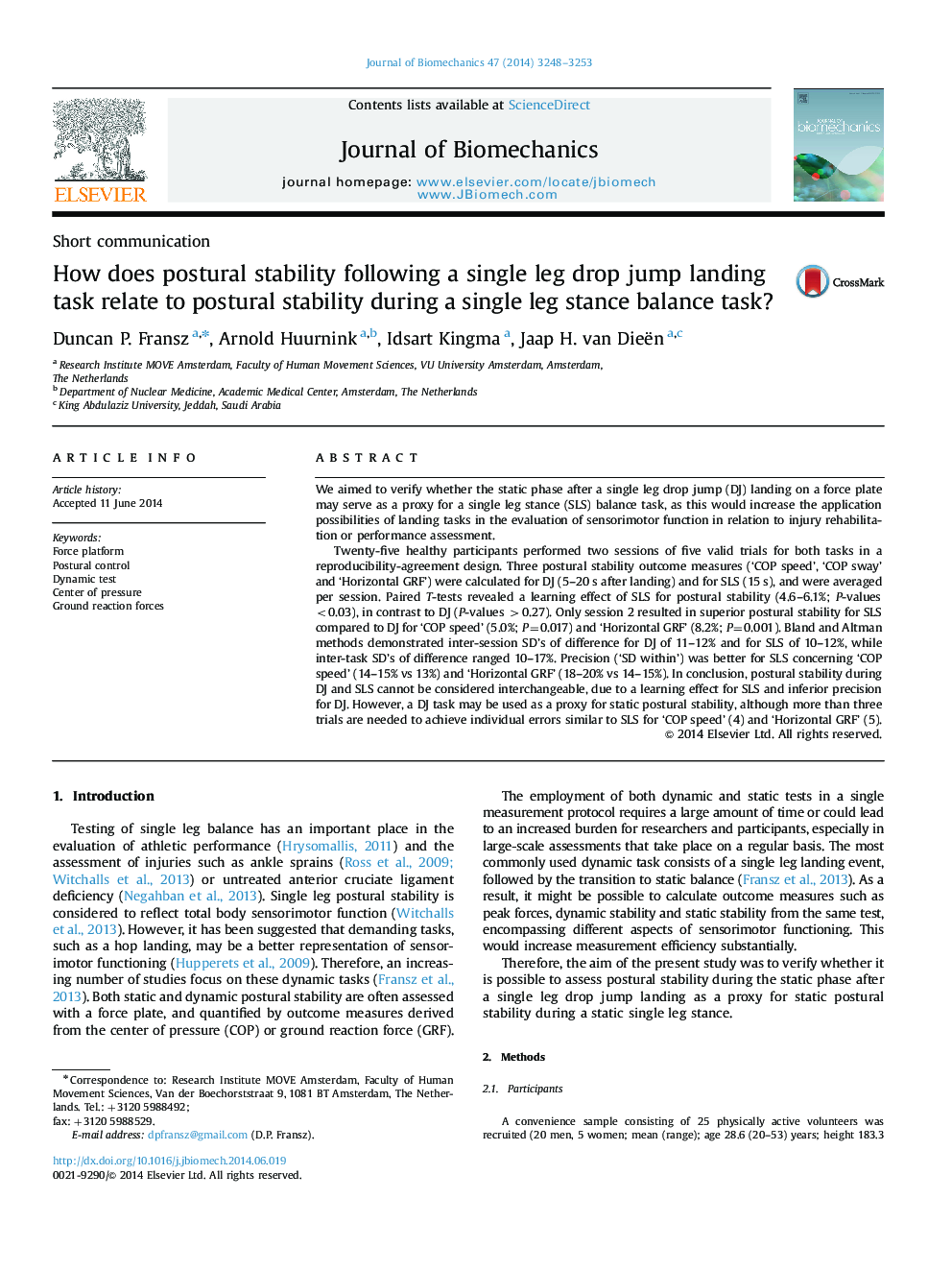| Article ID | Journal | Published Year | Pages | File Type |
|---|---|---|---|---|
| 10432149 | Journal of Biomechanics | 2014 | 6 Pages |
Abstract
Twenty-five healthy participants performed two sessions of five valid trials for both tasks in a reproducibility-agreement design. Three postural stability outcome measures ('COP speed', 'COP sway' and 'Horizontal GRF') were calculated for DJ (5-20Â s after landing) and for SLS (15Â s), and were averaged per session. Paired T-tests revealed a learning effect of SLS for postural stability (4.6-6.1%; P-values <0.03), in contrast to DJ (P-values >0.27). Only session 2 resulted in superior postural stability for SLS compared to DJ for 'COP speed' (5.0%; P=0.017) and 'Horizontal GRF' (8.2%; P=0.001). Bland and Altman methods demonstrated inter-session SD's of difference for DJ of 11-12% and for SLS of 10-12%, while inter-task SD's of difference ranged 10-17%. Precision ('SD within') was better for SLS concerning 'COP speed' (14-15% vs 13%) and 'Horizontal GRF' (18-20% vs 14-15%). In conclusion, postural stability during DJ and SLS cannot be considered interchangeable, due to a learning effect for SLS and inferior precision for DJ. However, a DJ task may be used as a proxy for static postural stability, although more than three trials are needed to achieve individual errors similar to SLS for 'COP speed' (4) and 'Horizontal GRF' (5).
Related Topics
Physical Sciences and Engineering
Engineering
Biomedical Engineering
Authors
Duncan P. Fransz, Arnold Huurnink, Idsart Kingma, Jaap H. van Dieën,
